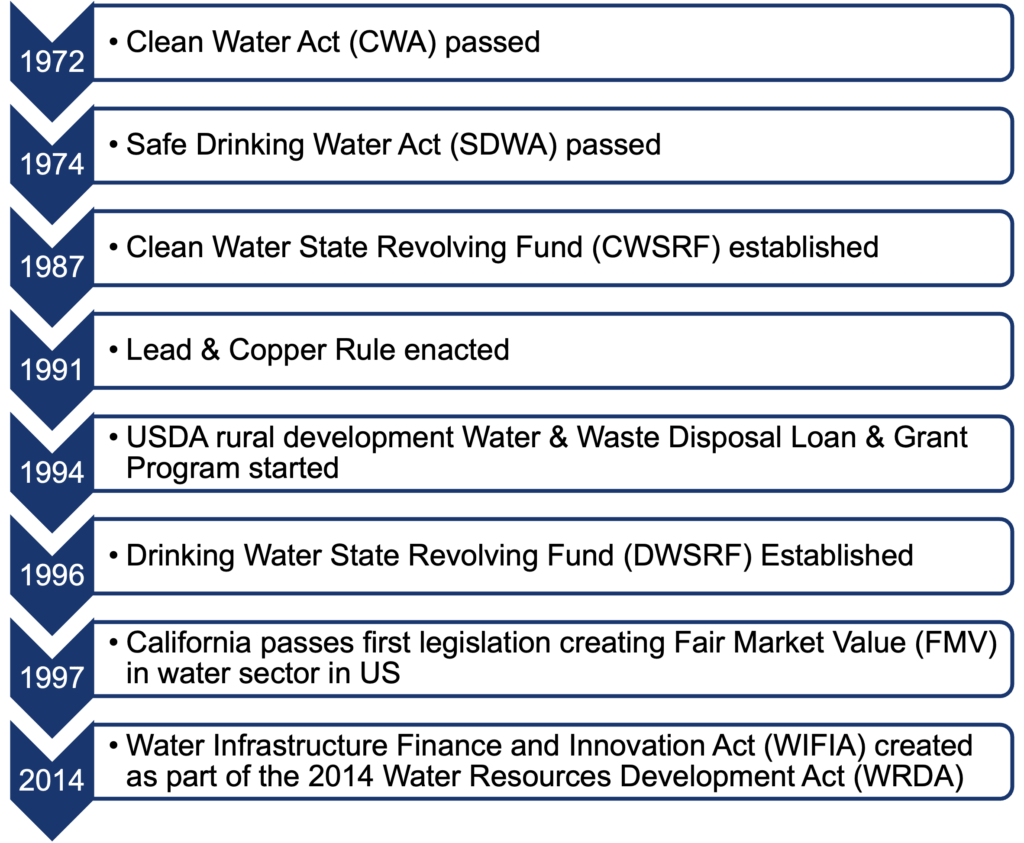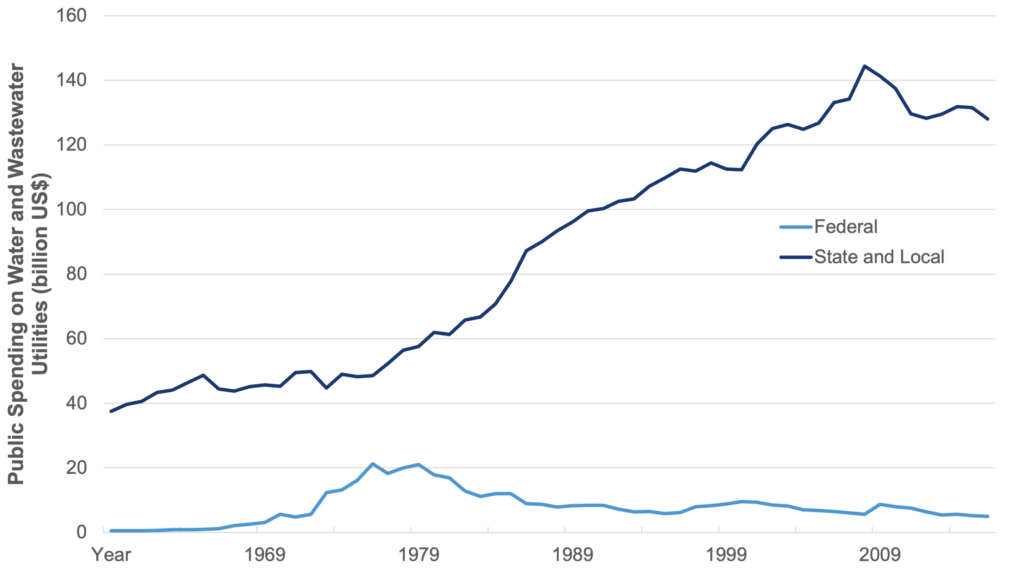Understanding the impacts of water policies
Bluefield water experts analyze the impacts of legislative and regulatory actions. From drinking water regulations to State Revolving Funds, water market policies play a key role in business strategies and opportunities.
Overview
The United States’ national water policy has trended toward more regulation and unification. Prior to 1972, no cohesive federal regulation on clean water standards or pollution control existed. Following the passage of the Clean Water Act (CWA), the number of laws regulating and providing funding for water and wastewater systems has increased.
History
Prior to federal water legislation (and even state legislation in many cases) two main doctrines about the allocation of water existed in the United States: Riparian and Prior Appropriation. The Riparian doctrine was most common in Eastern States where water was abundant and colonial British law established the foundation of the common law system. Riparian rules tie legal water rights to land ownership. In most cases, it also didn’t specify uses or amounts of water that each landowner is given, rather assumed reasonable use.
The Appropriation doctrine emerged from the California Gold Rush in the mid 19th century, when the sudden influx of people into a water stressed area created a first come, first served policy with water rights. Appropriation systems also have a “use it or lose it” principle, where if you don’t use all of your allotted water you risk losing the right to the extra. As laws became more formalized in the 1800’s many states (especially those out West) took a middle ground approach and accommodated both doctrines in their legislation.

The first federal water legislation took place in 1899 with the passage of the River and Harbor Act, a predecessor to the Water Resources Development Act (WRDA). This act began the trend towards protecting the nation’s waters. In 1972, the Clean Water Act (CWA) marked the first major water pollution control federal policy. Prior to that, it was common for individuals, municipalities, and industries to dump sewer and other pollutants directly into rivers and water sources. Connected to the CWA, the Waters of the United States (WOTUS) was established to determine the scope of federal jurisdiction of pollution control.
The two State Revolving Funds, Clean Water and Drinking Water Acts, were created to help states fulfill the goals of the CWA and SDWA respectively. They are joined by WIFIA and the USDA Rural Development water loan program to create the core programs through which the federal government funds water and wastewater projects.
Market Effect
Federal regulation works as a major driver in water infrastructure by requiring municipalities and industries to invest in treatment and disposal systems. Furthermore, the federal government is also a key source of capital through funding programs such as WIFIA and the USDA Rural Development Water & Wastewater Loan Program. Local and State governments do spend more annually on water and wastewater infrastructure.
Public Spending on Water and Wastewater Utilities

U.S. Municipal CAPEX and OPEX (1956-2015)


